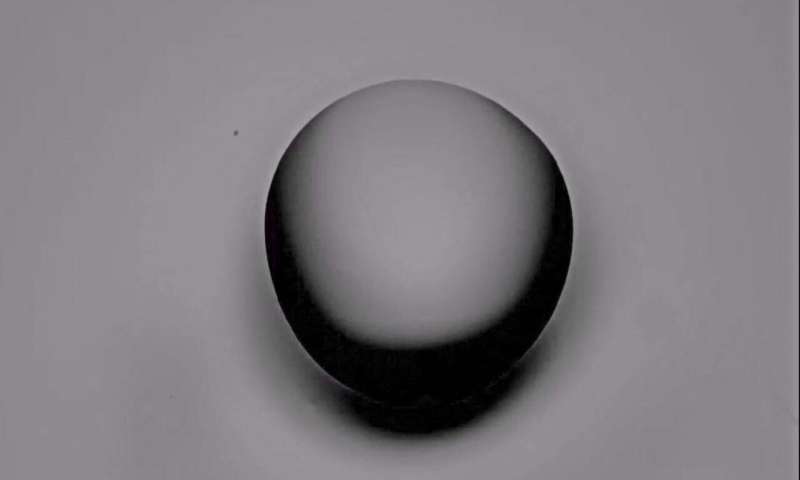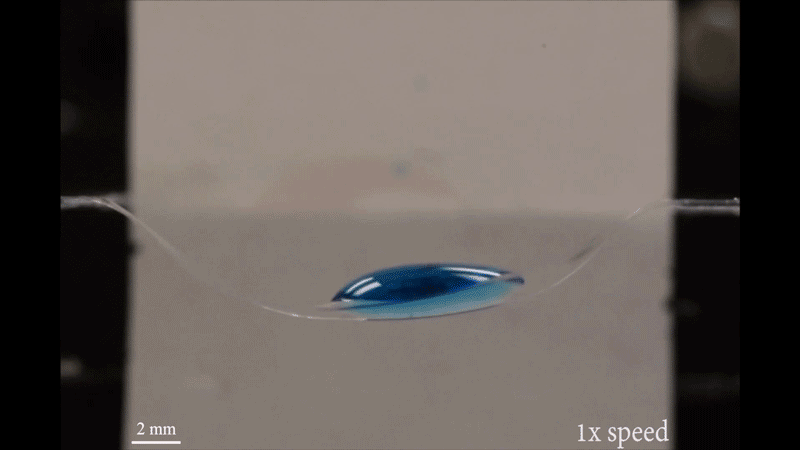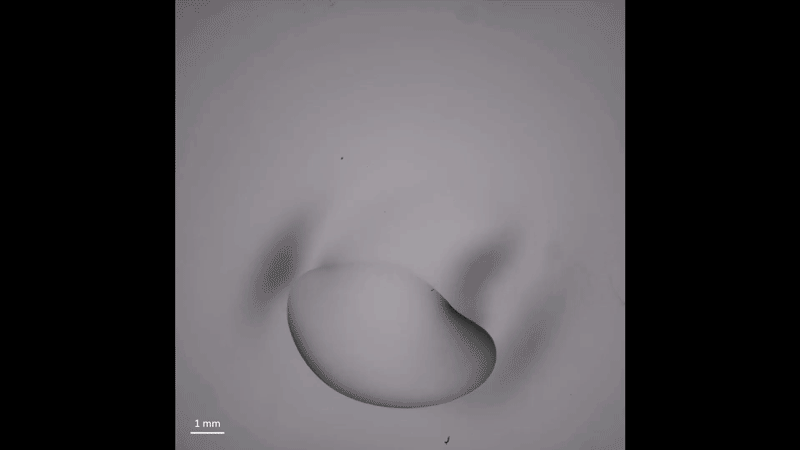#Self-excited dancing droplets
“#Self-excited dancing droplets”

Controlling the movement of liquid droplets is important in many applications that generate heat, from power plant condensers to personal computers. Techniques to control droplets on surfaces today include using good old-fashioned gravity, hydrophobic chemical coatings, and temperature gradients.
But what if a droplet could propel itself across a surface without chemicals, pre-programmed gradients or additional energy?
Now, researchers at the Harvard John A. Paulson School of Engineering and Applied Sciences (SEAS) have described a framework for self-excited droplet movement. The research is published in Physical Review Letters.
“Our system of self-excited motion doesn’t require any outside forcing or gradient,” said Aditi Chakrabarti, a postdoctoral fellow at SEAS and first author of the paper. “It spontaneously creates and responds to gradients by itself.”
The system uses a liquid solvent droplet—such as acetone or nail polish remover—on a thin sheet of material. When the droplet first touches the surface, part of the liquid gets absorbed into the material and the material swells. When the material swells, it buckles and creates an incline down which the droplet rolls. Now, the swollen part of the sheet is exposed to the air and the absorbed liquid evaporates, allowing the sheet to regain its original shape.

The same process occurs wherever the droplet moves, creating an oscillating movement that pushes a liquid droplet back and forth between two spots on the surface. The oscillation continues until the droplet shrinks.
“This see-saw movement is entirely self-driven by the interaction between these three behaviors—absorption-driven swelling, fluid flow and evaporation,” said Chakrabarti. “This type of self-generated motion hasn’t been explored before and could lead to exciting applications.”

The research team used different types of solvents and droplet sizes to generate this behavior on thin sheets.
“Harnessing such behaviors and motion in thin film systems might provide a natural way to drive small-scale engines, oscillators, and pumps,” said L. Mahadevan, the Lola England de Valpine Professor of Applied Mathematics, of Organismic and Evolutionary Biology, and of Physics and senior author of the paper. “This system could also provide a simple physical model to understand how biological systems, such as protocells, move.”
More information:
Aditi Chakrabarti et al. Self-Excited Motions of Volatile Drops on Swellable Sheets, Physical Review Letters (2020). DOI: 10.1103/PhysRevLett.124.258002
Self-excited dancing droplets (2020, August 20)
retrieved 20 August 2020
from https://phys.org/news/2020-08-self-excited-droplets.html
This document is subject to copyright. Apart from any fair dealing for the purpose of private study or research, no
part may be reproduced without the written permission. The content is provided for information purposes only.
If you want to read more Like this articles, you can visit our Science category.
if you want to watch Movies or Tv Shows go to Dizi.BuradaBiliyorum.Com for forums sites go to Forum.BuradaBiliyorum.Com



